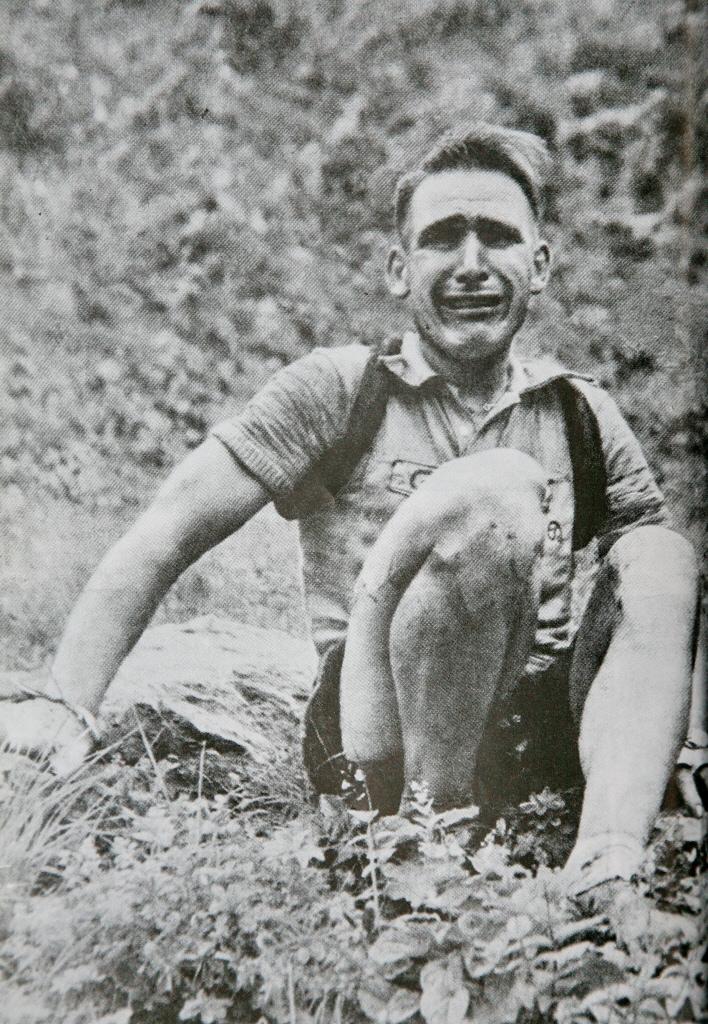The more I dvelve into the history of road cycling races the more I convinced that the stories born on the slopes of Col d’Aubisque are far more interesting to tell than the ones happened on Col du Tourmalet. Both legendary ascents were introduced to Tour de France in 1910, when the race first visited the Pyrenees, were usually together included into the program of the most memorable stages, but the latter one managed to earn a bigger name during the decades since its first appearance.
And yet, one of the most dramatic stories of the more than 120 year long history of Tour de France evolved on the Aubisque in the 13th stage in 1951.
A day earlier, in the 12th stage a young rider, Wim van Est took the yellow jersey. This was the very first time, that a Dutch cyclist claimed the symbol of the race, and van Est was determined to keep it as long as possible.
But the next stage led the peloton to the higher mountains, the 201-km long stage between Dax and Farbes included the most iconic ascents of the Pyrenees, like Tourmalet and Aubisque. And the leading man in yellow had very little experience how to ride such a route.
Anyway, he resolved to stick with the leading group, composed of the best climbers in the peloton, and test his limits against the punishing slopes.
However, it quickly became apparent that van Est was struggling. The pace set by the leading climbers was relentless, and van Est, a powerful rider on flatter terrain, found himself fighting to stay in contention.

Adding to his troubles, van Est suffered a puncture during the climb. Losing time while fixing the flat, he pushed even harder to make up the gap, but the punishing gradients of the Aubisque began to take their toll.
Exhausted and off-balance, he crashed a few times before finally cresting the summit.
Still, van Est had managed to stay in the race and was determined to make up time on the descent. Unfortunately, the descent would prove to be far more treacherous than the climb itself.
The descent from the Col d’Aubisque is one of the most dangerous in the Tour de France, with steep, narrow roads and sharp, twisting turns. The riders who survived the grueling climb had little time to recover as they plunged headlong into one of the most perilous descents in the race. Van Est, driven by the desire to maintain his lead, took extraordinary risks to close the gap on the leading group.
Following closely behind Fiorenzo Magni, a celebrated Italian rider and strong descender, van Est pushed his bike to its limits. Riding at high speeds through tight corners, van Est misjudged one particularly sharp turn and lost control of his bicycle.
In a split second, his bike veered off the road, sending him tumbling into a 70-meter-deep ravine.
The spectators who had gathered to watch the race could only look on in horror as van Est disappeared over the edge. What followed was a moment of sheer disbelief and panic, as it seemed certain that no one could survive such a fall. Yet, miraculously, van Est did. The crash had thrown him deep into the ravine, but by some miracle, he escaped the worst of the injuries one might expect from such a terrifying drop.
Lying in the ravine, bruised and battered, van Est’s determination to continue racing kicked in.
Spectators rushed to the scene to help, and in an extraordinary effort, they used a makeshift rope fashioned from inner tubes to pull him back up to the road.
As they hauled van Est out of the abyss, covered in dirt and visibly shaken, he was still set on continuing the race, showing the same resilience that had brought him success earlier in his career.
Despite his desire to continue, those around van Est convinced him to go to the hospital. His team, knowing the severity of the crash, insisted that he abandon the race. Van Est, though physically capable of pushing on, was forced to acknowledge that the crash had taken its toll. He reluctantly withdrew from the race.
Though his time in the yellow jersey was cut short, van Est’s career continued with notable success. He wore the yellow jersey again in both 1955 and 1958 and claimed two more stage victories in the Tour de France during his career. In 1953, he won the prestigious monument race, the Ronde van Vlaanderen, solidifying his place as one of the greats of Dutch cycling.
But despite his many victories, it is his fall into the ravine on the Col d’Aubisque that remains the defining moment of his career. It’s a story that captures the very essence of the Tour de France: the risks, the drama, and the indomitable spirit of the riders who compete in one of the toughest races in the world.